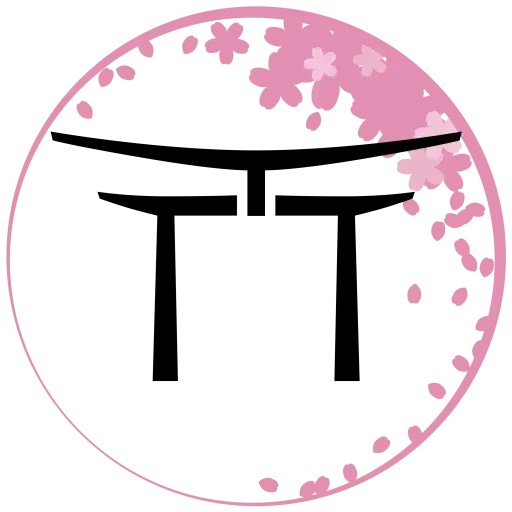The Essential Guide to Onsen in Japan with Kids

Last Updated on November 7, 2025 by Kay
This post may contain affiliate links, meaning I may earn a small commission on any purchases through those links at zero additional cost to you. Whatever I make goes to keeping this website running and I am forever grateful for the support. See my Privacy Policy for more information.
Whether you’re living in Japan or just visiting, you might be interested in visiting an onsen (温泉) or two with your family. But going to an onsen for the first time can be intimidating, especially if you have small children.
I’ve been to onsen countless times, both with and without my daughter (four years old at the time of writing) so I thought I would write a comprehensive guide about onsen in Japan and important things to know when visiting with children.
Table of Contents
- So What Are Onsen, Anyway?
- From What Age Can Kids Visit Onsen? Are Babies Okay?
- When Is the Best Time to Visit an Onsen with Kids?
- Can I Visit an Onsen While Pregnant?
- Can I Visit an Onsen on my Period?
- Do I Need to Stay at a Ryokan to Visit an Onsen in Japan?
- What Should I Bring to an Onsen?
- Kid-Friendly Onsen Experiences in Japan
- What to Know When Visiting an Onsen with Kids
- Most of all, enjoy the experience!
So What Are Onsen, Anyway?
Onsen are hot spring baths and are beloved in Japan. Not only is soaking in an onsen relaxing, the minerals in the water are believed to be good for your health and are believed to help with chronic conditions, as well as make your skin feel soft and glow. There is also so much variety when it comes to types of onsen due to various minerals inside. For instance, the color of onsen water can range from milky white to brick red!
There are many types of onsen in Japan. Public onsen are the most common, which are shared baths separated by gender. Usually, the entrances have color-coded curtains that are called noren — red for women and blue for men.
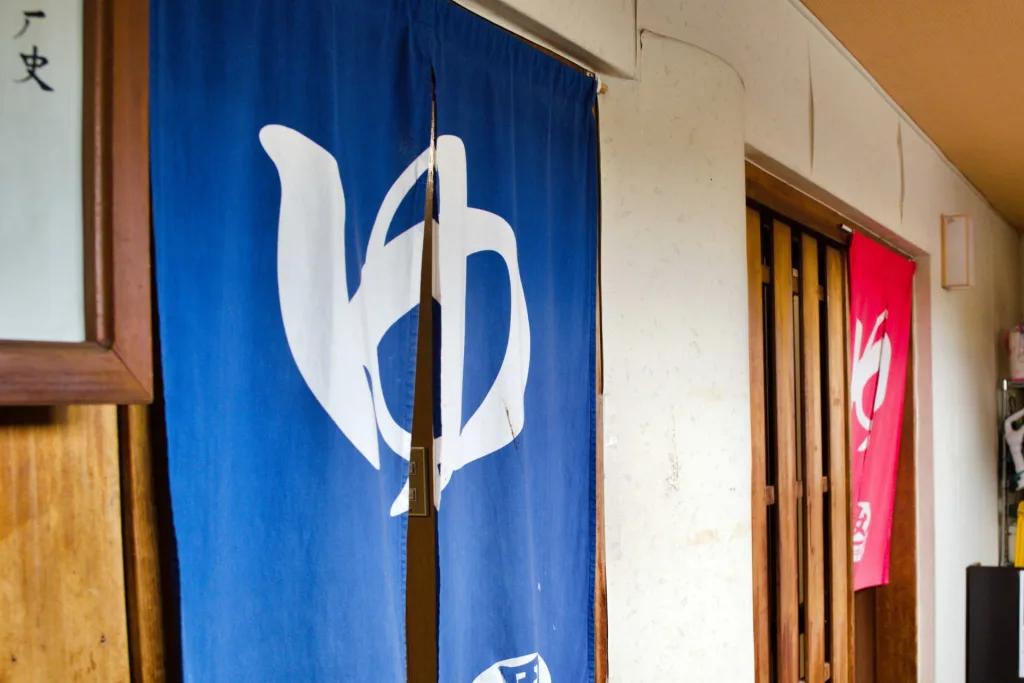
However, if the curtains are in colors other than blue and red (or both in the same color), look for the kanji 女 for woman and 男 for man, as shown in the image below.
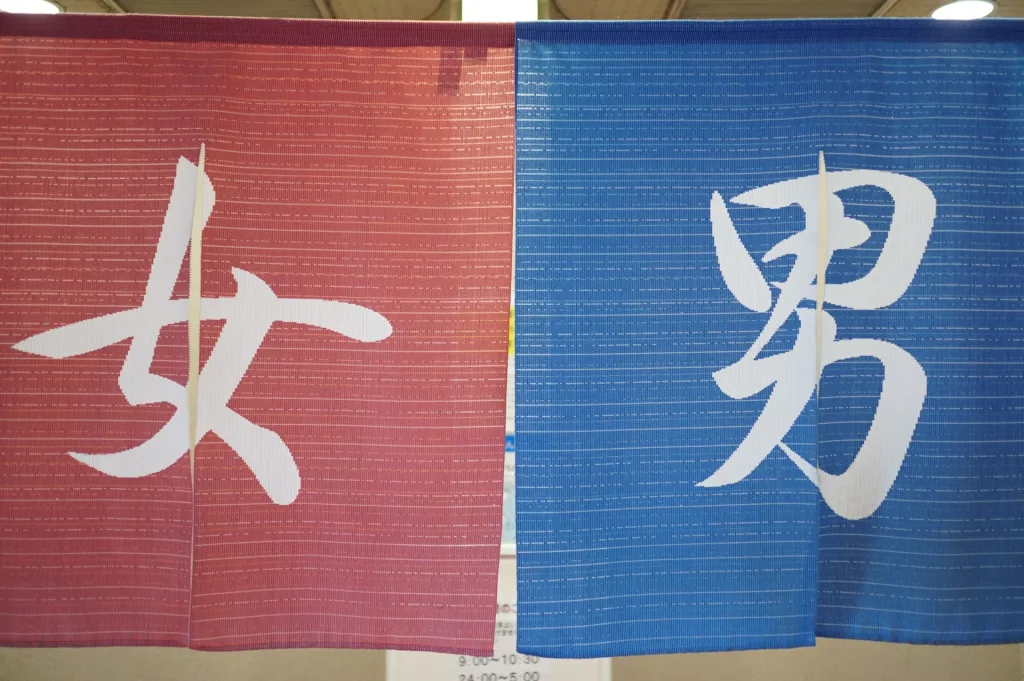
Onsen are located either inside a building or outside. Open-air onsen are called rotenburo (露天風呂) and are my favorite because there’s nothing like soaking in a hot bath while feeling the cool air on your skin (and sometimes getting to look at beautiful scenery).
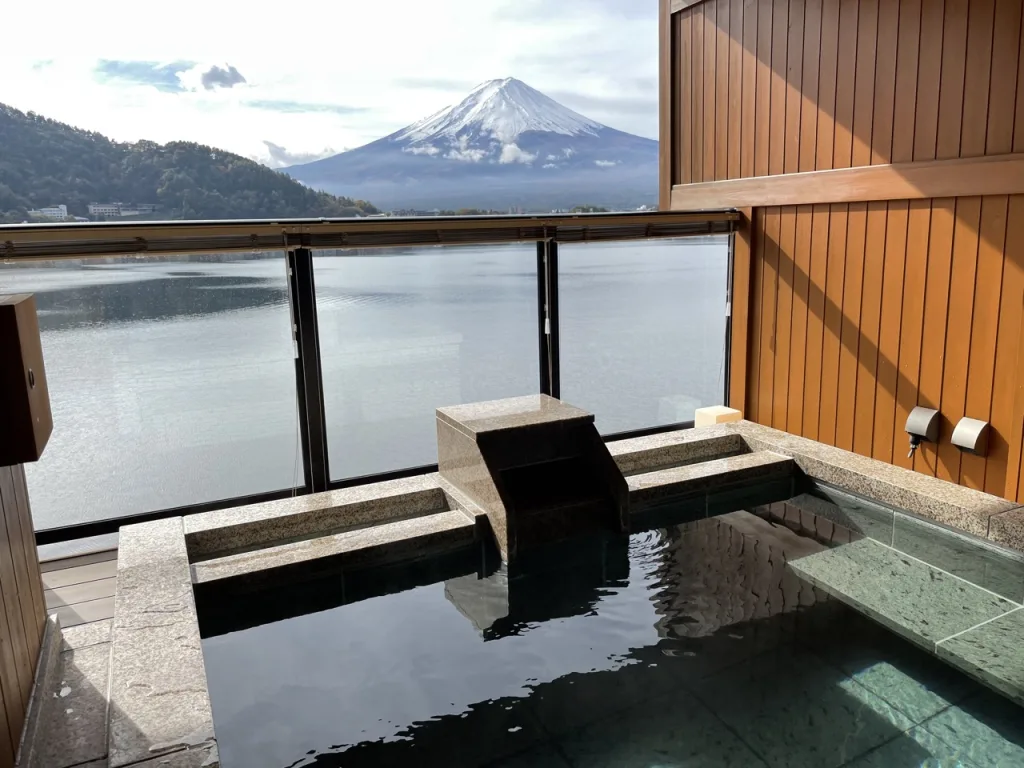
You can also rent a small onsen bath for a short period of time (typically for an hour), which is called kashikiri onsen (貸切温泉). Depending on how big it is and the size of your family, this is a great solution if you want to bathe with your family. Some ryokan also rent out kazoku onsen (家族温泉), which is a type of kashikiri (貸切) onsen but specifically for families (kazoku, 家族).
Many ryokan, especially higher class ones, come with small onsen in the rooms, which we love to book. But of course, these rooms tend to be pricier than rooms without an onsen inside.
Typically you’ll find that these onsen are open-air or outdoor ones and listed as rotenburotsuki heya (露天風呂付き客室) on hotel/ryokan websites like Jalan (じゃらん) or open-air baths on English websites.
I’ve also compiled a hand-selected list of child-friendly ryokan across Japan so please take a look!
(PS. Booking.com and Rakuten Travel![]() are other amazing English-language resources when it comes to finding ryokan (with onsen) in Japan.)
are other amazing English-language resources when it comes to finding ryokan (with onsen) in Japan.)
For all onsen, you can only enter when completely undressed. This includes public onsen.
I was very nervous when I first visited an onsen back in the day. This was before smartphones and tourism wasn’t as big as it is now. I was worried about the other women staring at me and my foreign nakedness but surprisingly, the old ladies there asked me if they could wash my back! It was so surprising to me and a really nice memory.
(Interestingly, fifteen years have passed since that initial visit and no one has asked me if they could wash my back ever since! I don’t know how I should feel about this…)
If you’re visiting Japan, I highly recommend visiting an onsen, even if you feel a little shy about being in your birthday suit around strangers. I mean, it’s likely you’ll never see them again anyway so why not?
From What Age Can Kids Visit Onsen? Are Babies Okay?
When it comes to age, the general guideline seems to be around 6 months old for private baths in your room and a year old for public baths, particularly because small babies are not potty-trained and still don’t have strong immune systems. However, it’s important to check with the onsen you’re visiting about age restrictions. Note that diapers or swim diapers are absolutely not allowed inside the onsen.
Personally, I think if your child is not potty-trained, then it’s best not to take them to a public onsen. Sometimes you might see people bringing babies but since people are sharing the bath, you never know if a little one might have an accident (…I like to avoid those types of onsen for obvious reasons). In fact, a friend of mine told me that her toddler once peed in the shower area and she hurriedly tried to clean it with body soap.
That being said, if you have a baby and/or your child is not potty trained yet, I would suggest staying in a ryokan (a traditional Japanese inn) with an onsen bath inside the room. That way, you can enjoy the bath as a family. However, note that some ryokan might have a policy that babies and younger children who are not potty trained can’t use even the onsen in the room!
I was worried about bringing my daughter to an onsen when she was a baby so she didn’t go inside one until she was two years old (partly because of COVID as well, I might have tried when she was around one if I had the chance). I made sure to check the temperature of the water to make sure it wasn’t too hot. If there’s a tap to add cold water in an onsen attached to the room, then I’ll use it to cool the bath down.
A Japanese friend of mine told me that similarly, she first took her kids when they were around two to three years old.
When Is the Best Time to Visit an Onsen with Kids?
The best time to enjoy bathing in an onsen is during autumn or winter. Although your child might feel cold initially if they go to an open-air onsen in winter, they will quickly feel better once in the water.
Don’t worry, it’s unlikely your child will catch a cold if they bathe in an open-air onsen in winter. However, I do not recommend washing their hair before they go into the onsen. Wash it once you’re done and ready to leave. (Make sure to tie up long hair.)
I do not suggest visiting an onsen in the summer. It will likely be too hot for your child, even indoor onsen, as it was for my daughter when we went to an onsen in June. If you want to try an onsen in summer, I suggest going in the early morning or late evening so it feels a little cooler.
Can I Visit an Onsen While Pregnant?
Yes, you can! Actually, in Japan, women are encouraged to go to onsen as it’s good for the baby to be warm.
I went to Izu when I was pregnant for my babymoon and had the best time soaking in onsen. To prevent myself from becoming dizzy, I made sure not to soak too long, stayed hydrated, and took extra precautions to prevent myself from slipping.
I also stayed at a ryokan where there was an onsen in the room (rotenburotsuki heya ・露天風呂付き客室) since public onsen tend to be more slippery and I didn’t want to risk getting possibly sick. (Note that I have never gotten sick from public onsen but I felt that I shouldn’t take any chances.)
That being said, it’s best to go once you’re well into your second trimester and the baby is stable. Also, it doesn’t hurt to get the opinion of your doctor just in case!
Can I Visit an Onsen on my Period?
It depends on the policy of the onsen but let’s face it, it’s unsanitary. To give you an idea of how locals feel about it, 78% of women in Japan stated in a survey that they do not go into a public onsen when on their period and 65% are against it.
If you must use a public onsen on your period (for instance, there’s no shower in your room at a ryokan or hotel) and it’s allowed, you should wear a tampon.
Do I Need to Stay at a Ryokan to Visit an Onsen in Japan?
No, not necessarily! Many onsen allow people to use their facilities just for the day, called higaeri onsen (日帰り温泉). I find these especially perfect if you’re camping and want somewhere to bathe or you’re enjoying a snowy area and want to warm up, or even after hitting the slopes.
Note that you may need to pay a small fee to rent a towel if you’re doing only a day trip.
Jalan (じゃらん) has a guide about 500 different higaeri onsen across Japan, so if you’re interested, click on the banner below. Note that this is in the Japanese language only.
What Should I Bring to an Onsen?
Onsen typically provide body soap, shampoo, and conditioner for free, which is shared and in massive bottles in the shower area. If you have sensitive skin, you can bring your own products but try to make sure these are in small travel-sized bottles like these ones.
Some onsen will also have special chairs like these to bathe babies and toddlers.
Ryokan will also provide you with towels, one big towel for drying off your body and a smaller hand towel for the bath. (Note that you should not put this towel inside the bath.)
The smaller towel can be used to wash your body in the shower area but I use it to dry myself and my daughter off when I come out of the onsen so we’re not dripping wet in the changing area.
These towels are either included in the fee for the onsen or you need to pay an additional fee. It completely depends on the onsen, but I’ve found that it’s included more often than not.
If you need to purchase a towel, the small ones cost around 300 to 600 yen, and you can usually take it home with you as a souvenir. Make sure to bring cash because some onsen might make you use a vending machine to pay for additional items like towels.
I always bring two clean plastic bags, which I put in a clean ziplock bag in my purse. I use one plastic bag for our underwear and the other one for the clean towels since usually, I’ve found that the towels are not given to you in a bag and it’s annoying to hold as-is (not to mention kind of unhygienic).
Other than that, you can bring a change of clothes as well. (In this case, I’ll have additional plastic bags to put dirty clothes.)
Onsen have lockers too, so bringing purses and cellphones are okay (but do not take photos inside the onsen). You can bring anything, really, as long as it’s not huge like a suitcase or something super dirty. The last thing you want to do is inconvenience other people visiting the onsen.
Ryokan rooms will also have a wooden bag where you can put all the things you need to bring to go to an onsen.
Onsen provide hair dryers and drinking water for no additional fee. Other things you can use for free at onsen typically include skincare products, like makeup remover, face creams, toners, etc., as well as hair brushes.
My daughter really likes the hair brushes, which she calls “comb brush”. It’s super cute to see her sitting on one of the stools in her yukata after a bath and brushing her hair while singing like a Disney Princess.
Kid-Friendly Onsen Experiences in Japan
Here are just a few of many onsen that are among the most famous in Japan and I think are great to visit with kids.
Kinosaki Onsen (城崎温泉)
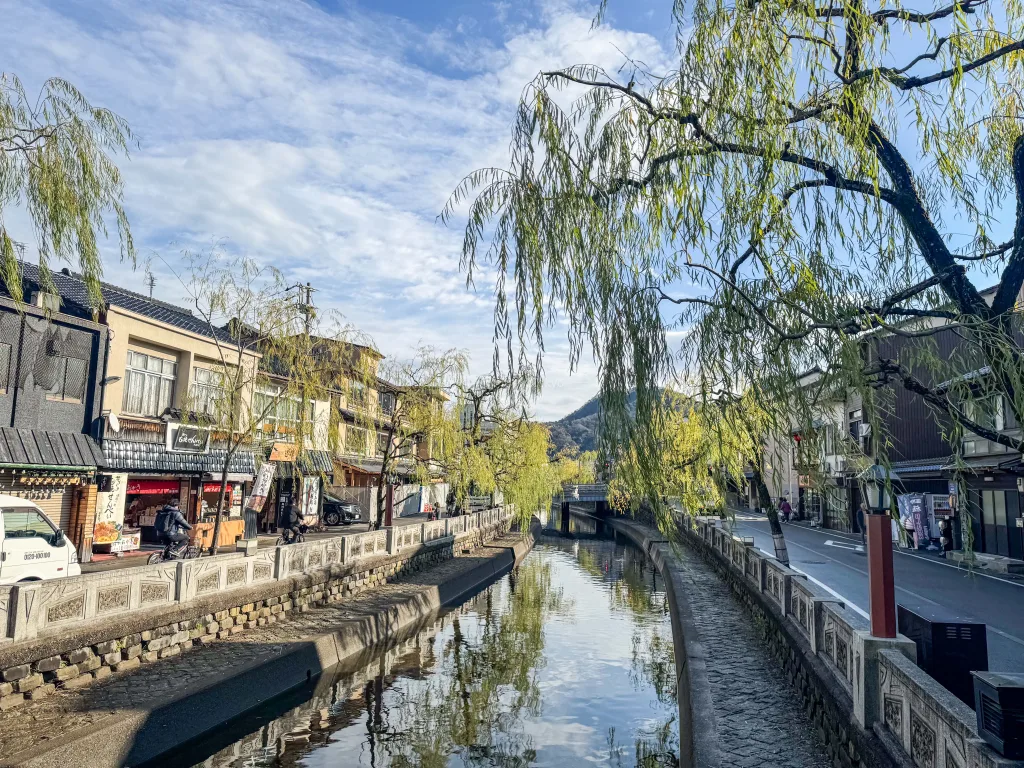
Located in the Kansai region and easily accessible from Kyoto and Osaka, this is one of my favorite onsen towns in Japan.
I’ve written an in-depth article all about Kinosaki Onsen so make sure to read it to know more!
Arima Onsen (有馬温泉)

This is a hot spring resort town in Kobe that’s easy to access and has a ton of different onsen to visit, including an onsen in the middle of the town for just your feet, called ashi yu (足湯)!
I love to visit these onsen for day trips and some ryokan even offer fancy lunch sets with their one-day visit (higaeri ・日帰り) packages such as from Ginsuiso Choraku.
View this post on Instagram
Arima Onsen is also famous for two types of onsen — a “silver” type with clear water that is called Ginsen (銀泉) and a more brownish-orange “gold” type called Kinsen (金泉). My daughter was so excited when she saw and then bathed in the Kinsen water, which she called “orange juice”.
To know more, read my article about visiting Arima Onsen with kids.
Recommended Child-Friendly Ryokan:
Kusatsu (草津)
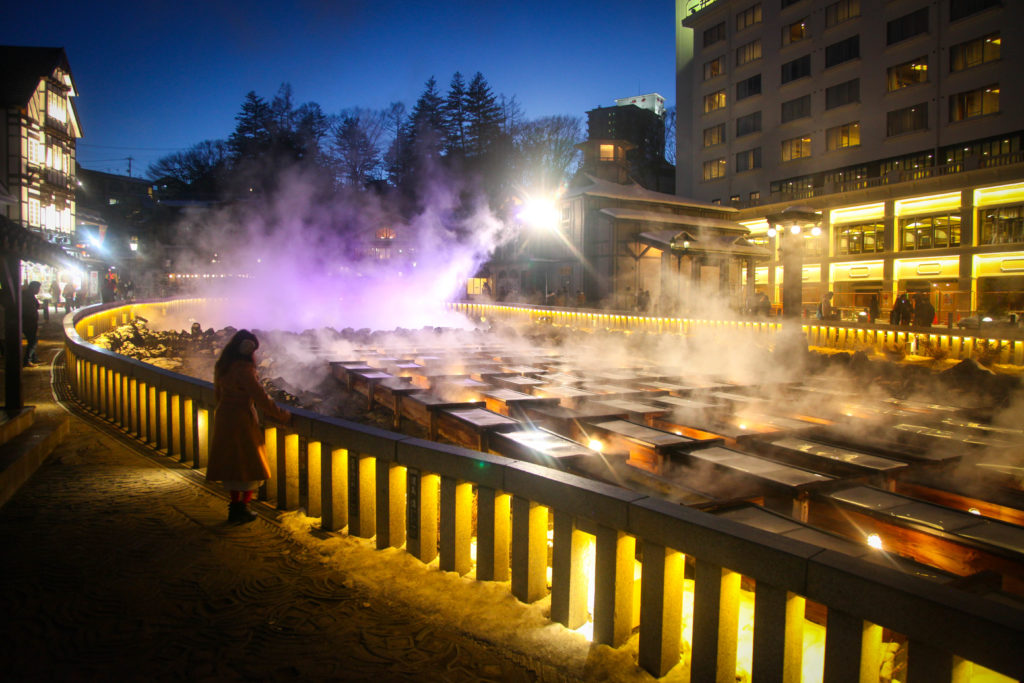
Kusatsu is another famous hot spring resort town in Japan that is located in Gunma, but is close enough to visit from Tokyo.
Most ryokan have private hot spring baths either in your room or that you can rent, where you can soak and stay toasty.
Kusatsu also has an onsen field known as Yubatake, which is in the heart of the city. It is quite a sight to see and there are also lots of souvenir shops and restaurants surrounding it.
Recommended Child-Friendly Ryokan:
Izu Peninsula (伊豆半島)
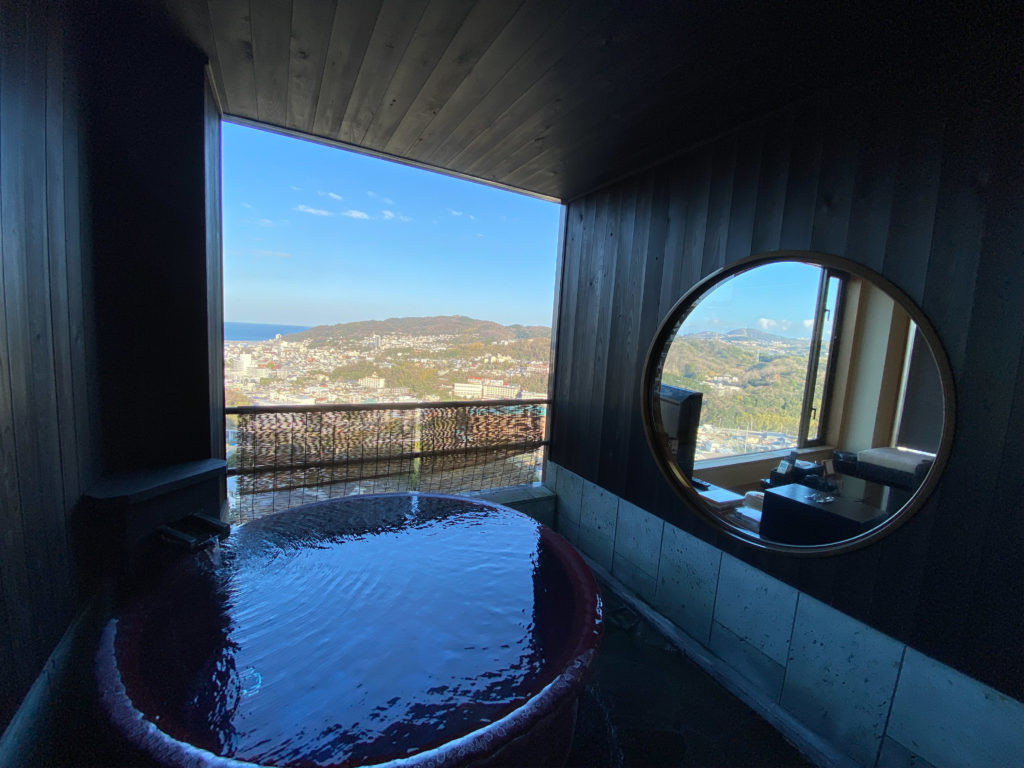
Located in Shizuoka, Izu was one of my favorite places to visit when I lived in Kanto. In fact, I went there on my babymoon and took my daughter to another ryokan in the area for her first vacation!
They have so many beautiful ryokan with amazing seafood and lovely onsen, some looking over the ocean, so I definitely recommend visiting, especially in around February to see their famous early blooming sakura (kawazu-zakura)!
Recommended Child-Friendly Ryokan:
Hakone (箱根)
This is another onsen town that’s easy to visit from Tokyo as it’s located in Kanagawa, a neighboring prefecture. Alongside its numerous onsen, Hakone also offers stunning views of Mount Fuji and Hakone Shrine, which has a beautiful torii gate perched on the shore of Lake Ashi, as well as many art museums.
Yunessun in particular might be a fun place to take kids as it has a water park for kids and numerous onsen, some that require bathing suits (which you can rent) and some that do not.
View this post on Instagram
Recommended Child-Friendly Ryokan:
Yufuin (由布院)
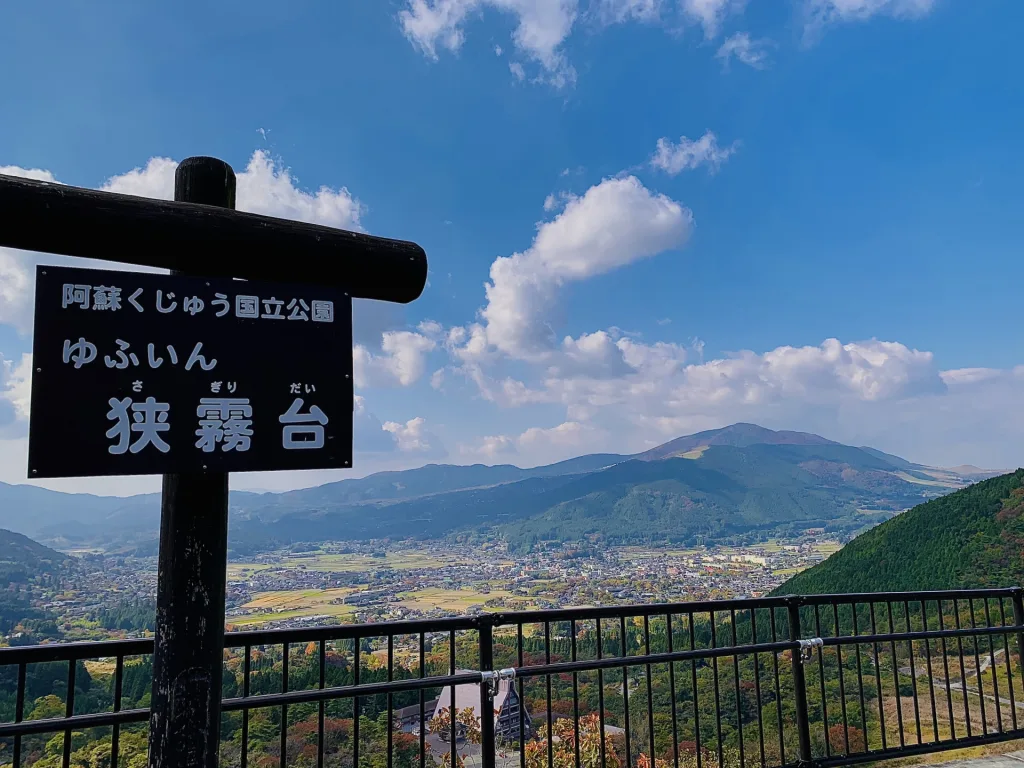
This small and quaint town in Kyushu is one of my favorite places in Japan and is known for its numerous onsen. The onsen are all very gorgeous and have stunning views.
It’s also very close to Beppu, which I’ll introduce next.
Recommended Child-Friendly Ryokan:
Beppu
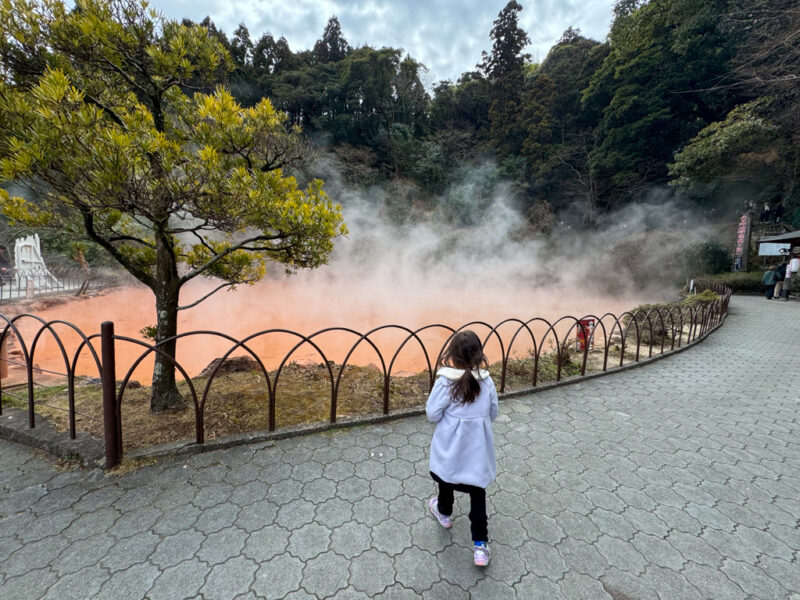
Beppu is also famous for onsen, particularly the Hells of Beppu (pictured above), which have very interestingly colored onsen that you cannot bathe in but are fun to see.
Although you can’t bathe in the Hells of Beppu, they do have footbaths, and there are plenty of onsen in other parts of the city where you can take a dip.
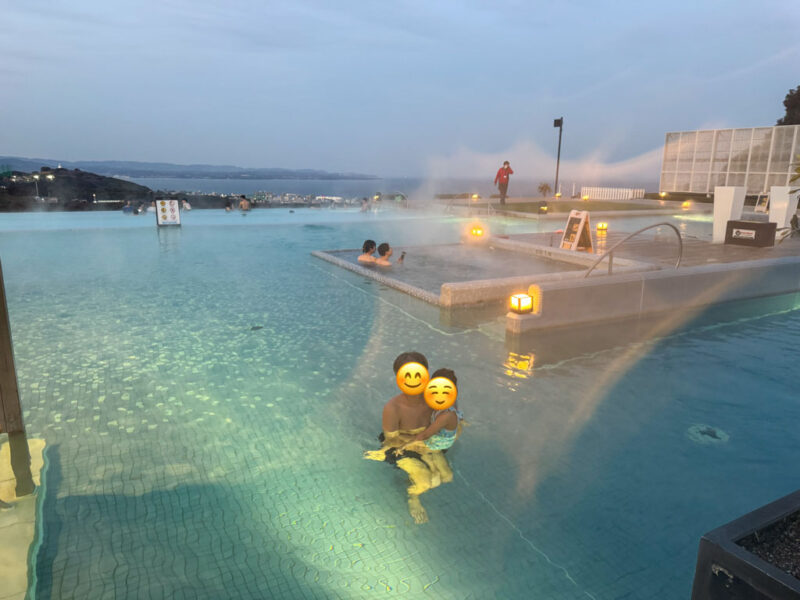
In particular, I recommend staying at Suginoi Hotel, which not only has traditional onsen where you bathe naked, but also an onsen “pool” where guests can wear bathing suits! The hotel offers so much more beyond onsen and I think it’s an excellent place for families.
Senkyaku Banrai Toyosu Manyo Club Onsen in Tokyo
Manyo Club is a huge onsen facility where you can visit for the day or stay the night if you like. You can see the Tokyo skyline from the outdoor baths, which is a bonus. It’s a little expensive but since it’s in Tokyo, this is expected.
They also have a family bath you can rent for an additional charge.
Genji-no-Yu Onsen in Uji, Kyoto
Uji is a beautiful area famous for green tea and Byodoin Temple, which is absolutely stunning. If you happen to visit Uji while you’re in Kyoto, I recommend checking out Klook’s onsen pass, perfect for those who want to experience Uji Natural Hot Spring Genji-no-Yu Onsen.
Fu Fu no Yu Onsen in Arashiyama, Kyoto
Arashiyama is one of the most famous tourist spots in Kyoto, known for its bridge, bamboo forest, and stunning green mountains. So if you’re in the area and want to relax in the onsen after a hard day of sightseeing, you might want to visit Fu Fu no Yu Onsen.
I went with my daughter and although it’s small, we found it was still an enjoyable time, especially for the price. There are two baths, one indoor and one outdoor where you can enjoy seasonal foliage.
Manyo No Yu Onsen in Fukuoka
I love Fukuoka for its amazing food, and although it might not be on everyone’s list of must-visit places in Japan, I highly recommend visiting at some point. I especially enjoyed the onsen, so I was pleased to see that Klook has an onsen pass for Manyo No Yu Onsen, which includes some cozy clothes to change into. You can also stay overnight for an additional fee, which might be fun for older kids.
Korona Onsen in Fukuoka
This is a newer onsen resort in Fukuoka and from the reviews, it seems that not many foreigners seem to know about it. There are multiple onsen baths, including a rocky open-air one (my favorite). Consider getting a pass to this onsen through Klook.
Wakayama Prefecture
My family loves Wakayama as there is so much to see and do, and the onsen in Wakayama Prefecture also do not disappoint. Although a bit dated, Hotel Urashima Resort & Spa would be a great place to visit with kids for several reasons.
It’s in an excellent location near Kumano Kodo, a World Heritage Site, has delicious and fresh maguro in its dinner buffet, and is close to an aquarium my daughter loves called Kushimoto Marine Park. Most of all, the hotel is built into a mountain and has onsen built into caves! It’s quite a sight to see and one of the most interesting onsen I’ve visited. My daughter also had a great time.
I’ve written an article about our trip to Kumano Kodo and stay in Hotel Urashima so please give it a read!
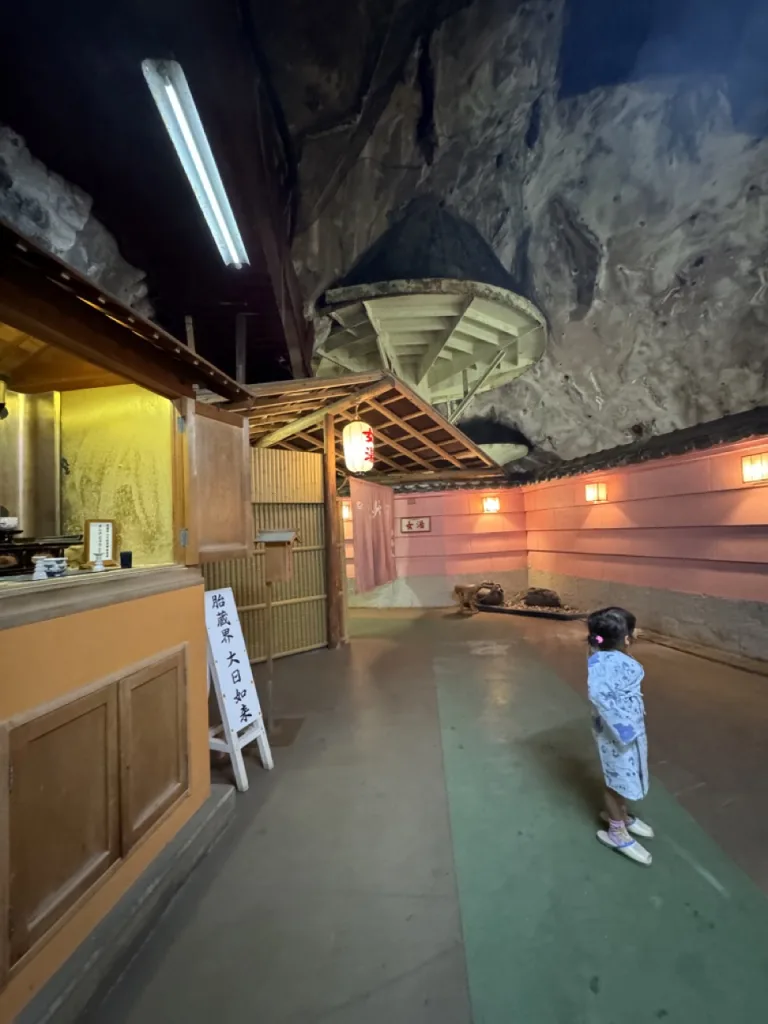
Recommended Child-Friendly Ryokan:
Dogo Onsen Honkan (道後温泉)
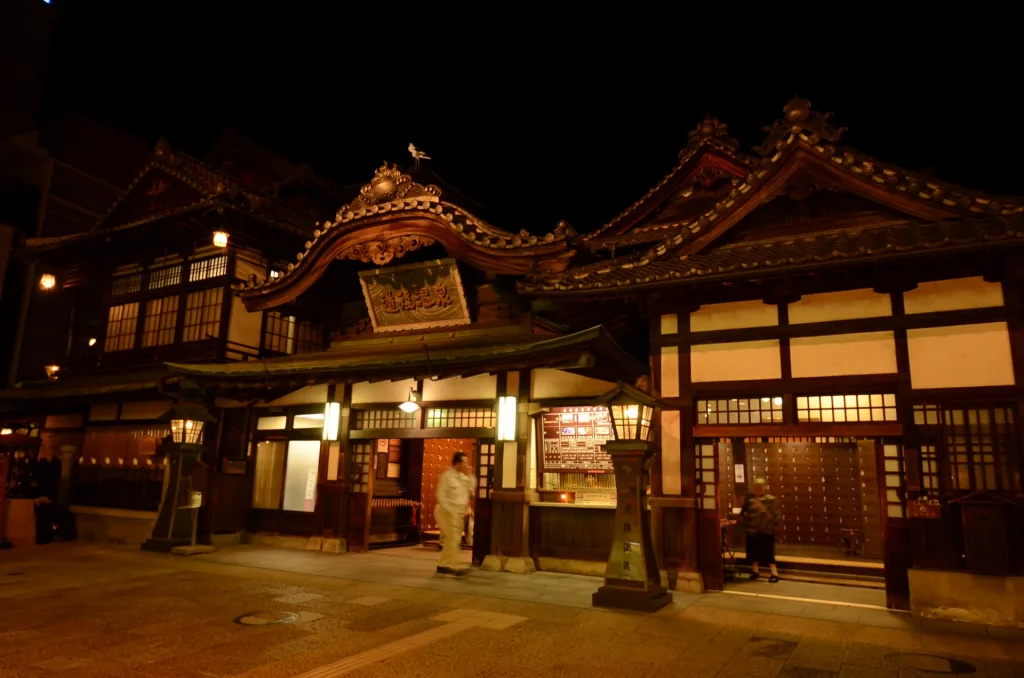
This is the onsen in Ehime, Shikoku, that inspired Spirited Away. So if you and/or your child is a fan and in the area, definitely visit, if only to look at the outside. I visited back in 2011 and it was magical, especially at night.
Note that it is currently undergoing renovations.
Jigokudani Yaen-koen (地獄谷野猿公苑)
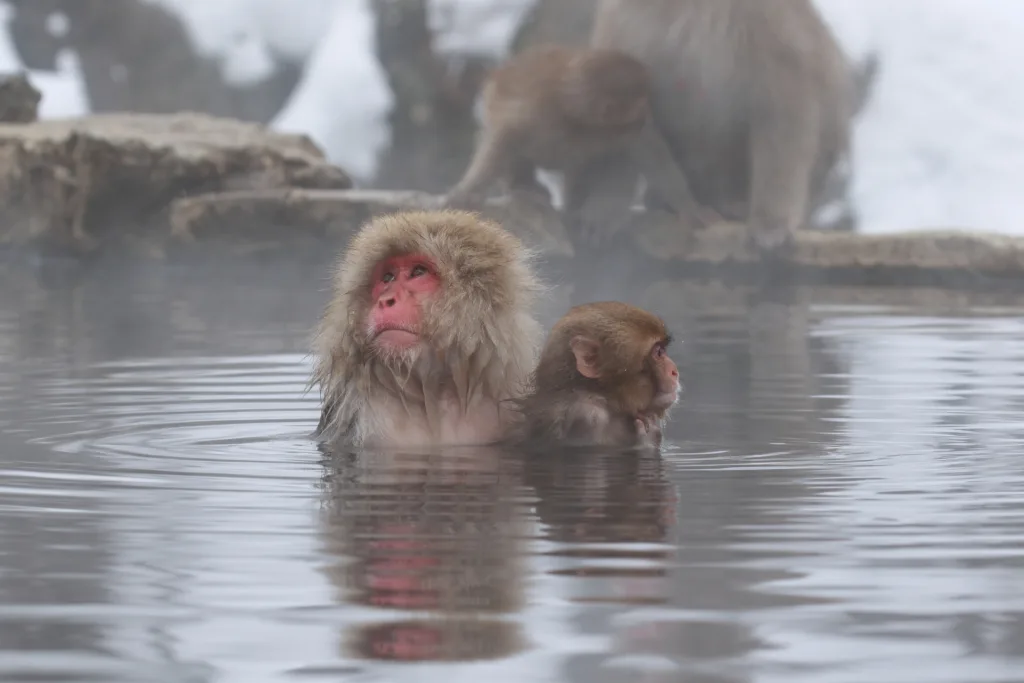
Located near a hot spring resort town in Nagano, you’ll find that the bathers in this onsen are not humans but monkeys! It’s so cute and sure to delight kids. (But since these are wild animals in their natural habitat, make sure not to bother them.)
Oedo Onsen Monogatari
This onsen chain is like a mini onsen amusement park with summer festival vibes and has several branches throughout Japan, such as in Minoh, Osaka.
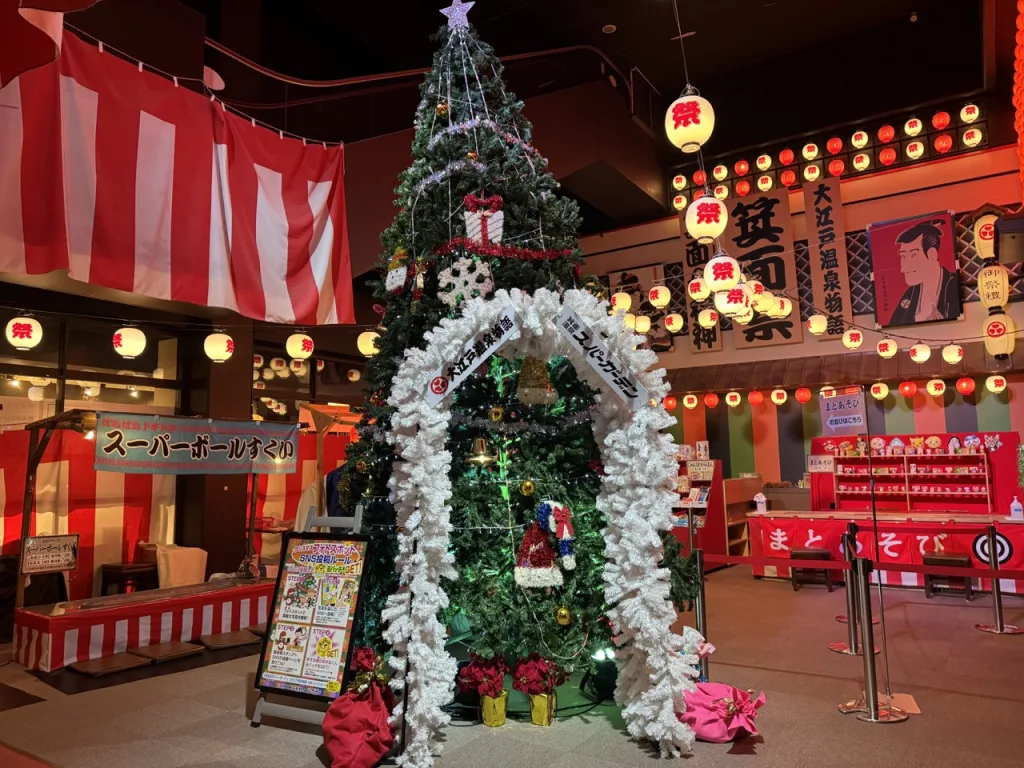
Note that some branches like this one in Chiba require you to wear bathing suits, which might be a good option for those who want the onsen experience but don’t want to strip down entirely.
Solaniwa
Solaniwa is another onsen theme park experience that’s located in Osaka. It also has similar Japanese summer festival vibes as Oedo Onsen Monogatari, but it’s much newer so the facilities are nicer and also seem plentiful.
They also offer yukata and private baths (for an additional fee) that you can rent out for your family, which is especially good if you have tattoos (more on tattoos at the end of the article).
I will say, though, that looking at the reviews, it seems like tourists from abroad seem more satisfied with this onsen than locals.
Super Sento (スーパー銭湯)
In order to be designated an onsen by the Japanese government, the water needs to be above 25C and contain at least one of 19 natural ingredients. Sento, however, don’t follow these regulations and may or may not contain directly sourced onsen water.
Sento are also more for locals in the neighborhood rather than tourists (both domestic and international). However, the bathing experience is very similar so I thought I would include it here.
Super Sento in particular gets its name from having several kinds of baths in its facility, including some unique ones like stone baths. Spa World in Osaka also has a water park, which is especially fun for kids!
View this post on Instagram
What to Know When Visiting an Onsen with Kids
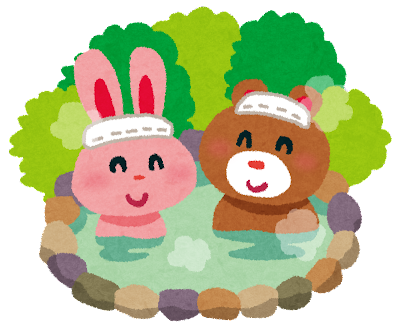
Don’t visit a public onsen if your child has diarrhea or a fever
This seems obvious but I thought I should write it here just in case. Your child’s condition will get worse and you can potentially make other people sick.
Make sure your child goes to the bathroom before going inside!
If your child is like mine, they might say they’re fine, they don’t have to go potty but they don’t know. At first, I believed my daughter when I asked her if she had to go potty (I know, silly me) and it wasn’t until we were fully stripped that she said she actually had to go.
Sometimes there wasn’t even a toilet inside the changing room, so we had to change back into our clothes, leave the changing room and head to the toilet, which was a big pain in the butt.
Don’t be like I was in the past. Check whether there is a toilet in the changing room or outside and then sit your kid on the toilet before they undress, even if they say they’re fine. The last thing you want is for them to pee in the onsen!
Take off your shoes at the entrance outside the changing room
You’ll see an area where you can step up into the changing room. Make sure you take off your shoes or slippers before stepping up and put them in the shoe box.
Tie your child’s hair if it’s long
Hair should be tied up before entering the onsen as you’re not supposed to put your hair inside the water (so also make sure your child doesn’t dunk inside either!).
If you need to wash your child’s hair but they have long hair, tie it up and wash it after they enjoy the onsen.
Some onsen also provide disposable shower caps, so you can use those as well.
Enter the onsen bath undressed and only bring your key and towel inside
Make sure you and your child(ren) undress completely before entering the showering area of the onsen, which is also where the onsen are located. (It’ll be behind a big, foggy door.) You can bring your towel and the key to your locker (which is attached to a band that you can wear around your wrist).
Take a shower before entering the onsen
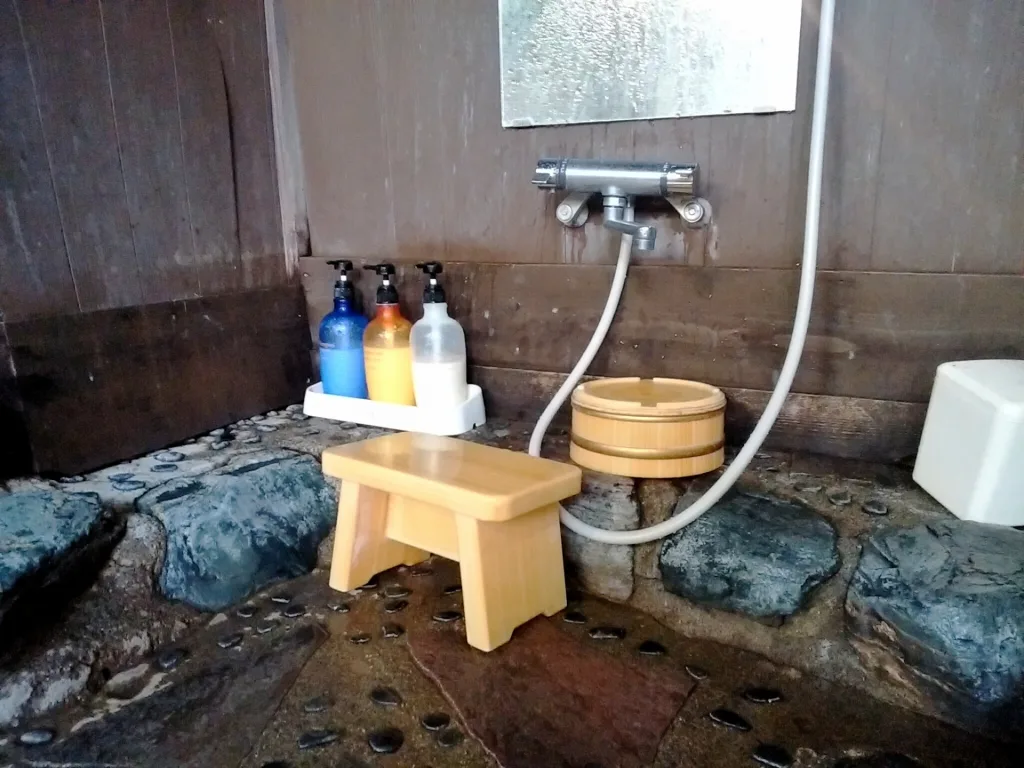
Make sure you shower with soap in the designated shower area before entering an onsen bath. You can wash your hair too, but since I tie my hair, I wash it after I get out of the onsen. You can take another shower after you come out of the onsen if you want to feel especially clean (which is what I always do).
It might be tempting to stand but try to sit down and shower on the provided stools to prevent the water from bothering others.
Make sure to rinse off the stools and buckets as well.
Do not put towels inside the onsen
Just like hair, you shouldn’t put your towel inside the onsen. Place your towel on a ledge or rocks outside the onsen.
I like to tie my towel like a headband (and my daughter looks super cute when I do that with hers!).
If you use your towel to wash your body, usually you can place the towel on the outer ledge of the onsen.
Don’t be afraid to ask for more towels
If you’re staying at a ryokan and have been provided towels, don’t feel afraid to ask the front desk for more if the one you’re using is soaked or you don’t want to go all the way back to your room to get one.
Do not take your eyes off your child or leave them unattended
The last thing you want is for your child to become injured or drown. Accidents happen so as parents we need to do our utmost to prevent them.
Make sure your children do not run inside the onsen
As the floor of the shower and surrounding area in onsen are covered in water, it can be slippery and dangerous, especially if your child is running. Ask your child to walk slowly and stay close to them.
Be careful when carrying your child in and around the onsen
Since the floors are slippery, take extra precautions when carrying them and walk slowly.
Do not take photos or videos inside public onsen
To protect the privacy of others, please do not take photos or videos inside a public onsen. It’s totally okay to take photos in a private onsen (kashikiri) if you’ve rented one, though!
Note age limitations for children entering the bath of the opposite gender
Public onsen are separated by gender and have limitations when it comes to the maximum age kids can enter the bath of the opposite gender. Generally, elementary-aged children (6 years old and up) cannot enter the bath of the opposite gender.
If your child is in elementary school and has never been to an onsen before, I don’t recommend sending them inside alone. It’s confusing enough for an adult for the first time!
Since people are (obviously) very naked in onsen, it’s also important to prepare your kids for this beforehand if they are younger than six years old, especially if they’re entering a bath of the opposite gender. Emphasize that they shouldn’t stare or point at anyone.
Test the water before your child goes in and note the temperature
Some onsen have signs about the temperature but just in case, make sure you check the temperature of an onsen yourself before putting your child inside, especially as some baths are hotter than others (especially open-air baths).
And if your child says it’s too hot even if you’re okay, trust them!
Carefully and slowly enter the water if you’re holding your child
As mentioned earlier, onsen can be slippery. Sometimes it can also be hard to see how deep the water is depending on the type of minerals inside, so if you can’t see the bottom of the onsen, proceed with caution.
Try to keep your soaks short
This primarily goes for those visiting onsen for the first time. Typically at around 40 degrees Celcius, the water in onsen is hot and it’s easy to get dizzy quite quickly.
Make sure to keep an eye on your child. Take frequent breaks, maybe every 5-10 minutes, and wash yourself and your child with cool water if needed.
Be careful of spouts!
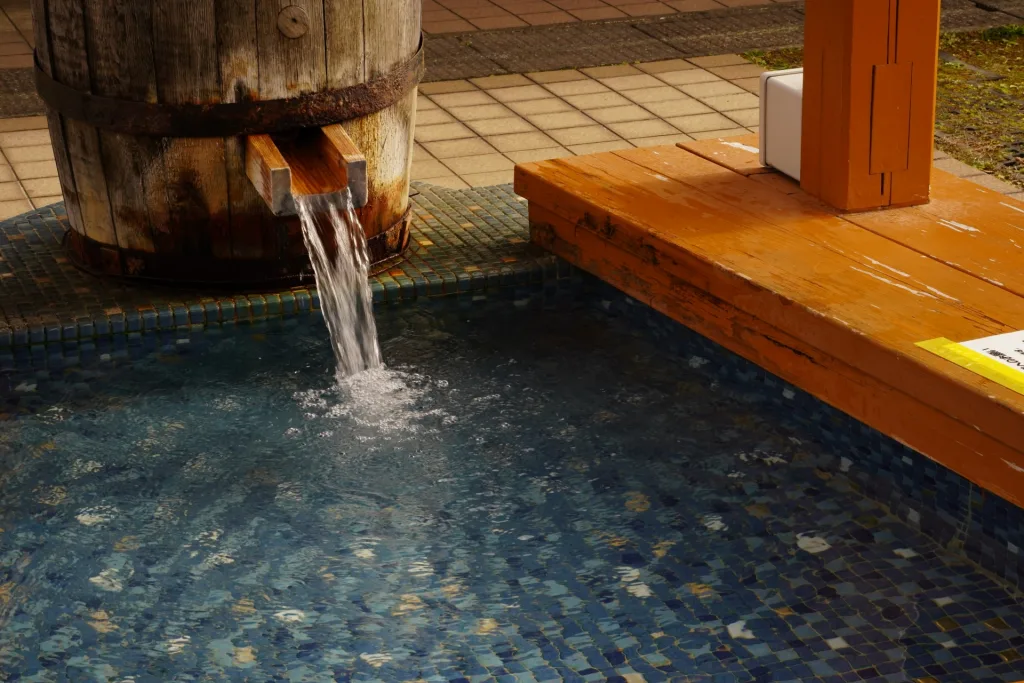
You’ll likely see some spouts releasing onsen water into the bath. Make sure your child does not touch that water or go too close to it because it’s very, very hot.
Don’t swim inside the onsen
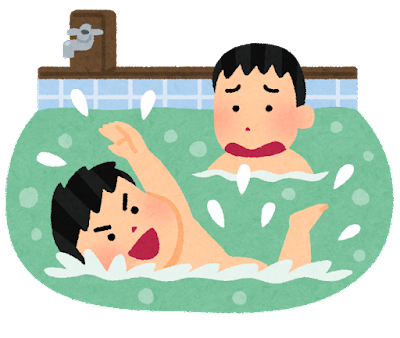
Onsen are for relaxing, not swimming. Make sure your child doesn’t splash around either, as this can bother other patrons if they’re close by.
(As I type this, my daughter is asking what I’m writing about and piping up with her own opinions about onsen. She brought up how she saw a little boy swimming in an onsen and said it was bad, and then proclaimed, “I like to relax!”)
Know that tattoos are (generally) not allowed
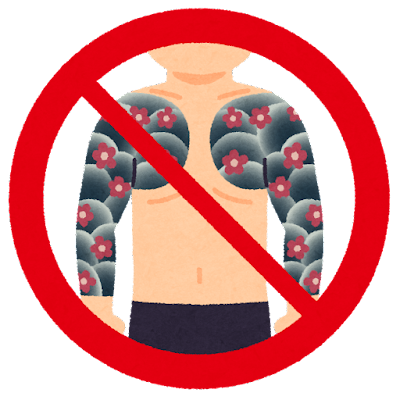
People with tattoos are generally not allowed to enter public onsen but I think it depends on the size of the tattoo. If it’s relatively small, I don’t think anyone is going to stop you from entering or complain about it.
I have a small, black tattoo on my back, about the size of my thumb, and I have visited many, many onsen in Japan over 15 years and no one has said a thing.
Otherwise, if you can cover your tattoo with a bandage, I recommend trying that.
Kinosaki Onsen is known for having various bath houses that are tattoo-friendly, so I recommend going there if you have tattoos.
Most of all, enjoy the experience!
I know, I know, all the rules and precautions are overwhelming. But they’re easy to follow (most of it is just common sense) and now that you know, I hope you can visit an onsen with your family filled with confidence.
My daughter absolutely loves going to onsen and pretending she’s a mermaid so I hope your little one(s) enjoy it too!
